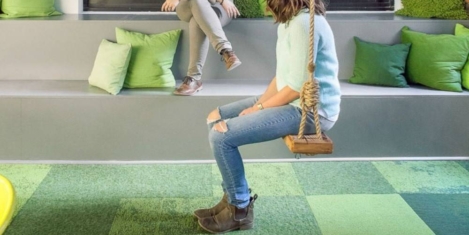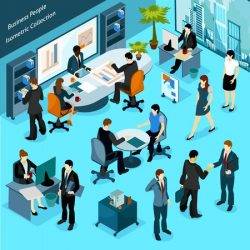October 18, 2017
Over a third of UK staff say employers offer no flexible working benefits
 British workers are lagging behind employees from other countries when it comes to flexible working hours and benefits like extended leave, suggests new research. New independent research commissioned by travel specialists Opodo.co.uk compared Britain with other nations across Europe and the USA, which reveals that British companies are lagging behind other businesses when it comes to flexible working. Three-quarters of employees in the UK (75 percent) don’t believe they have a generous holiday allowance and 84 percent aren’t offered time back in lieu for days worked over the weekend. It’s of no surprise then that 69 percent of Brits don’t think they have a good work-life balance.
British workers are lagging behind employees from other countries when it comes to flexible working hours and benefits like extended leave, suggests new research. New independent research commissioned by travel specialists Opodo.co.uk compared Britain with other nations across Europe and the USA, which reveals that British companies are lagging behind other businesses when it comes to flexible working. Three-quarters of employees in the UK (75 percent) don’t believe they have a generous holiday allowance and 84 percent aren’t offered time back in lieu for days worked over the weekend. It’s of no surprise then that 69 percent of Brits don’t think they have a good work-life balance.

















 Half of employees feel their organisation doesn’t have the right tech skills and nearly half in a recent survey (44 percent) feel their organisation isn’t transforming into a digital led company fast enough, claims a survey by Sungard Availability Services. Digital workplace transformation has been a big talking point in recent months, yet 38 percent in a survey of over 2,000 IT decision makers and employees believe their organisation isn’t committed to digital transformation; with 36 percent not getting the training for the tools. It’s apparent that digital transformation is highly thought of in the work place and impacts employee retention with 36 percent of employees open to leaving their current job for a more digitally-progressive company. Over 50 percent believe career progression is better at digitally led companies and 69 percent say digital tools would help them to do their job better. Said Chris Ducker, Senior Director Global Proposition Strategy: “Digital is compulsory, not only to stay competitive in the market, but also to attract and retain key staff” See the full survey
Half of employees feel their organisation doesn’t have the right tech skills and nearly half in a recent survey (44 percent) feel their organisation isn’t transforming into a digital led company fast enough, claims a survey by Sungard Availability Services. Digital workplace transformation has been a big talking point in recent months, yet 38 percent in a survey of over 2,000 IT decision makers and employees believe their organisation isn’t committed to digital transformation; with 36 percent not getting the training for the tools. It’s apparent that digital transformation is highly thought of in the work place and impacts employee retention with 36 percent of employees open to leaving their current job for a more digitally-progressive company. Over 50 percent believe career progression is better at digitally led companies and 69 percent say digital tools would help them to do their job better. Said Chris Ducker, Senior Director Global Proposition Strategy: “Digital is compulsory, not only to stay competitive in the market, but also to attract and retain key staff” See the full survey 
















